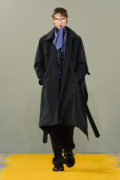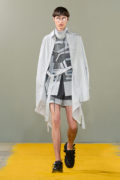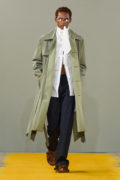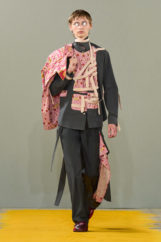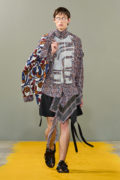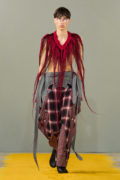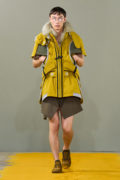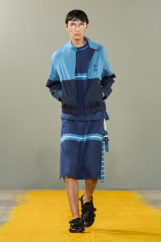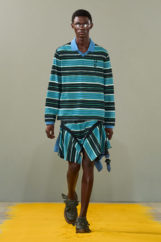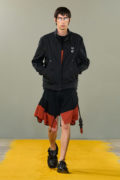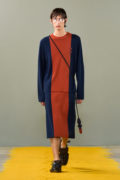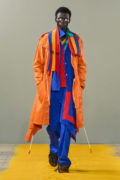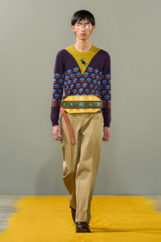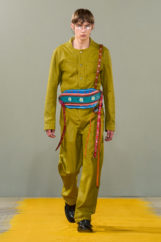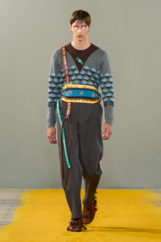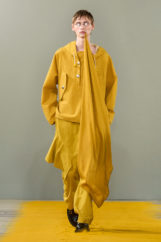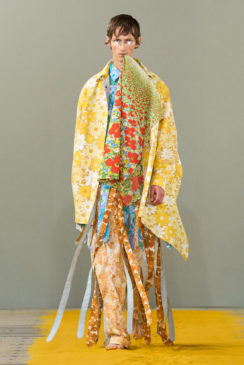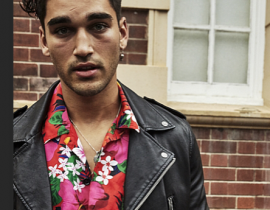Credit : Umberto Fratini – Launchmetrics
Dear Shaded Viewers,
The first time I encountered a Craig Green collection was at a groundbreaking show in Athens, presented in collaboration with Atopos in 2012. The exhibition, aptly titled “ARRRGH! Monsters in Fashion,” was curated by the visionary Vassilis Zidianakis. Green had just graduated from Central Saint Martins, yet his work already hinted at the boundary-pushing creativity that would define his career. As I entered the exhibition, the first person I saw was Zidianakis himself—an artist and innovator in his own right, whose curatorial vision set the tone for an unforgettable exploration of fashion’s most imaginative frontiers.
Craig Green’s Spring/Summer 2026 collection, unveiled yesterday at Paris Fashion Week, stands as a testament to his singular ability to transform the familiar into the uncanny, and the utilitarian into the poetic. In a season where nostalgia risks becoming mere pastiche, Green instead excavates memory and personal evolution, presenting garments that feel both rooted in tradition and startlingly new.
From the first look, it was clear Green was not content to simply revisit his signature codes. The collection’s silhouettes—deconstructed tailoring, dreamlike layers, and improvisational structures—evoked a sense of déjà vu, as if the audience were witnessing “a lover’s favorite record played backwards”. The tension between repetition and renewal pulsed throughout: sharp, uniform-inspired tailoring dissolved into slouchy, fluid forms, while prints borrowed from the 1960s—nautical stripes and Beatles-esque florals—invoked both the optimism and the psychedelic experimentation of that era.
Green’s references to British culture were palpable, yet never literal. The Beatles, with their spirit of reinvention, served as a touchstone, but the collection’s true heart lay in its emotional texture and symbolism. Structured collars became metaphors for connection, hinting at the push and pull of relationships—“collared to something, collared to someone”. Garments carried the weight of memory: dusty palettes, worn finishes, and sand-like textures in pockets and hems suggested the passage of time and the persistence of personal history.
Accessories and finishing touches—artful wide belts, slim sneakers, deconstructed sandals, and even pieces dangling from models’ lips—contributed to the collection’s sense of improvisation and surprise. Models, some wearing tiny light-up glasses, traversed a yellow sand catwalk, further blurring the boundaries between the everyday and the fantastical.
Yet, beneath the collection’s surface beauty and technical prowess, there was a deeper meditation on transformation. Green’s use of deconstructed elements—loose-hanging strips, destroyed knits, and unruly plackets—spoke to the vulnerability inherent in change, while the layering of sound as a conceptual motif suggested the synesthetic experience of identity in flux.
In an industry often pressured to deliver novelty for its own sake, Green’s SS26 show offered something more profound: a celebration of evolution that honors the past without being bound by it. His garments do not erase what came before; they build upon it, allowing memory and innovation to coexist. In doing so, Craig Green continues to prove himself not just as a designer of clothes, but as a poet of the runway—one whose work resonates long after the final look disappears backstage.
.

